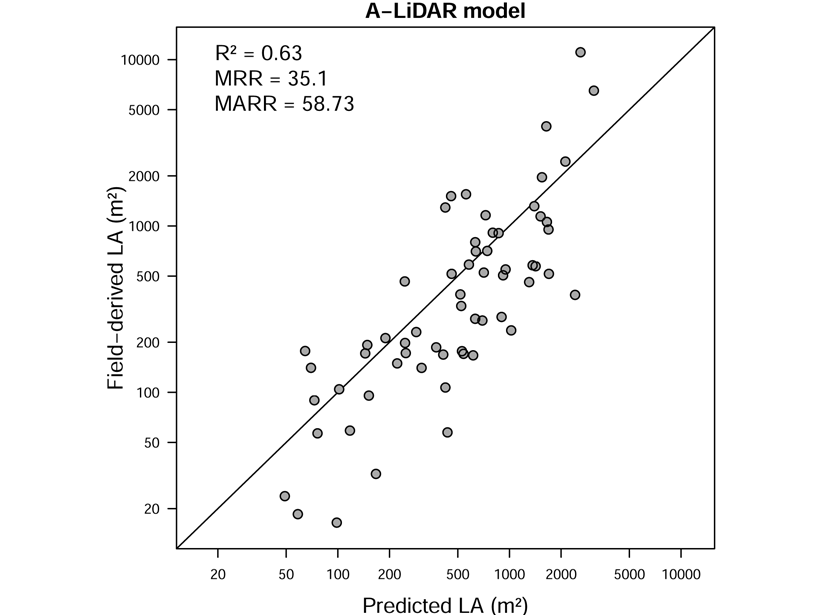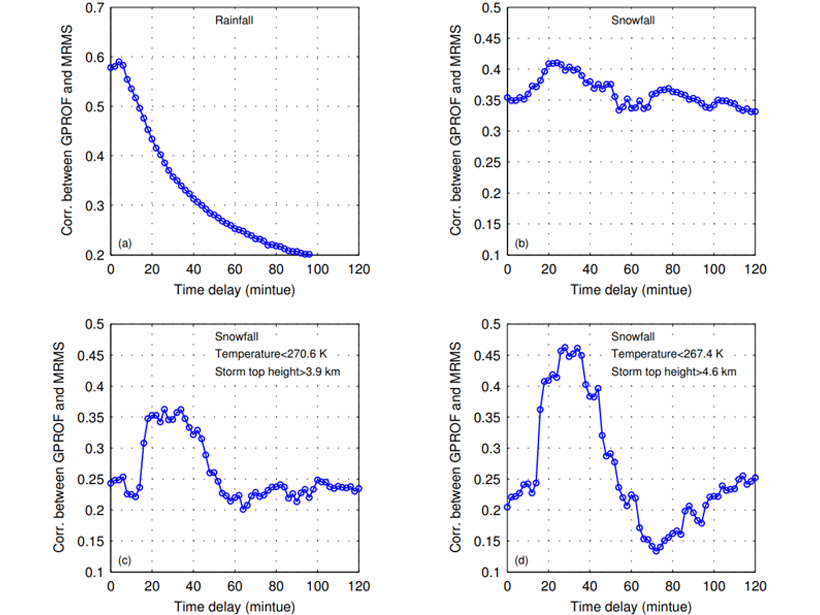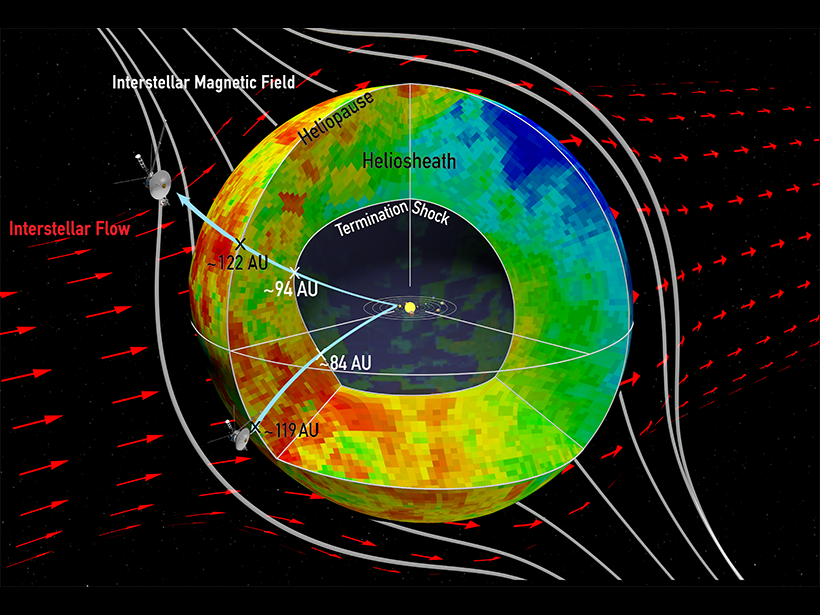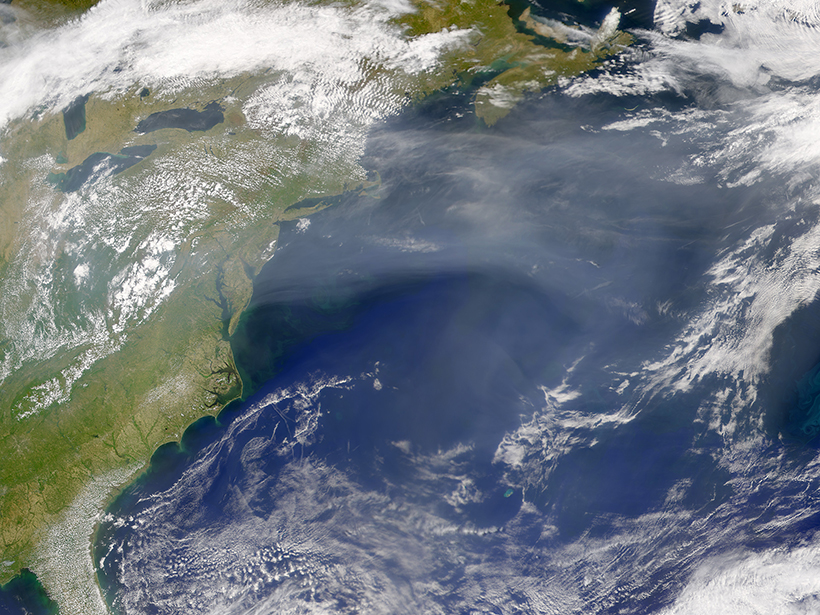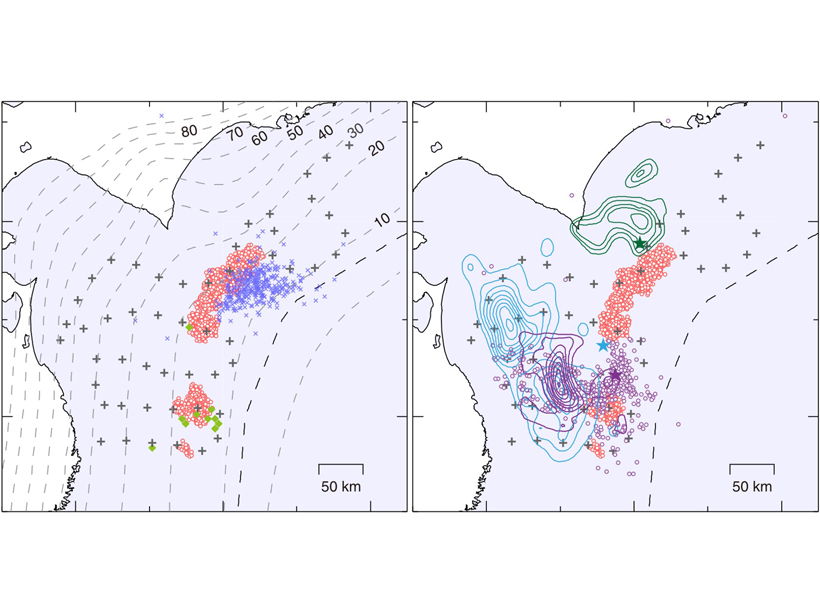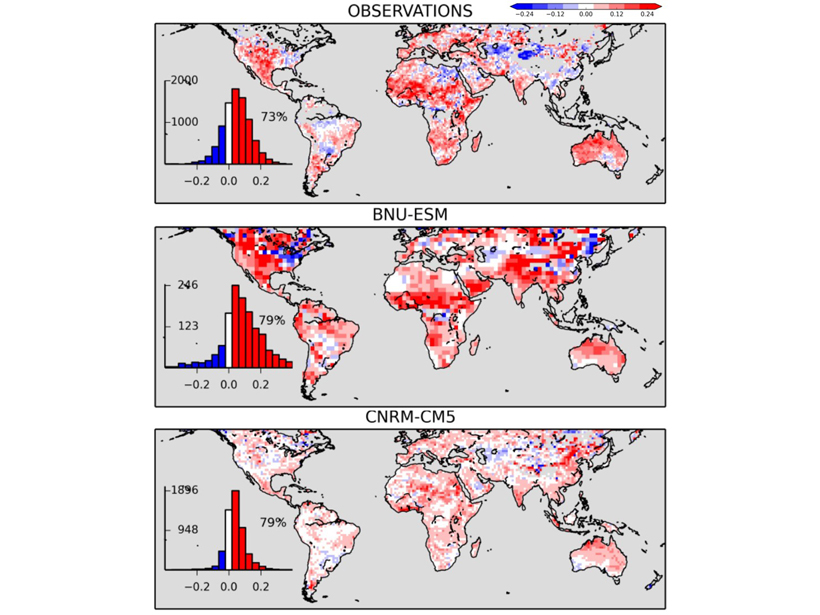A rare attempt to directly estimate leaf area in a tropical African broadleaved forest suggests that there may be more tree foliage than previously estimated.
Geophysical Research Letters
Accounting for the Fact that Snow Falls Slower than Rain
When calibrating satellite observations with ground-based ones, estimated precipitation rates are improved by considering that snow takes longer to fall compared to rain.
Sampling the Space Between the Stars
Data from the Cassini and Voyager spacecraft reveal new information about the Sun’s magnetic bubble.
Past Climate Sensitivity Not Always Key to the Future
New research suggests that changes in continental configuration, solar brightness, and background atmospheric carbon dioxide levels all conspire to drive Earth’s climate sensitivity over geologic time.
Detailed Origins of Sea Spray Revealed, One Droplet at a Time
An energized air-sea interface facilitates exchange between the atmosphere and the ocean. A new study looks at the formation of sea spray, an important component of this exchange.
Peeling Back the Layers of the Climate of Mars
A new study ties layers in the polar deposits of Mars to changes in climate driven by orbital variations, constraining accumulation rates and further deciphering the climate history of the Red Planet.
Tracking Earth’s Shape Reveals Greater Polar Ice Loss
Researchers offer a solution to better track mass changes in ocean water and polar ice.
Demystifying Sea Level Changes Along the New England Coast
No direct causal connection exists between coastal sea level changes and the strength of the North Atlantic’s overturning circulation, according to new, longer-term observational records.
Shallow Low Frequency Tremors in Japan Trench
A new seafloor seismic network detected low-frequency tremor on the subduction zone interface offshore northern Japan, indicating regions of slow slip in close proximity to shallow megathrust events.
Diagnosing Soil Moisture Impacts on Model Energy Fluxes
Do climate models truthfully mimic how drying soil affects land-surface budget partition?

